ENVIRONMENTAL RESPONSIBILITY
Every choice matters. As a company, we want to do our part for a cleaner climate and environment.
We acknowledge that greenhouse gas emissions from our entire value chain represent our most significant climate impact. We strive to reduce environmental impacts and lower our carbon footprint across the whole value chain. We also take the environmental impacts of the supply chain into account when planning and carrying out procurement. Since 2021, we have calculated our company’s annual carbon footprint and reduced the emissions generated by our operations.
CARBON FOOTPRINT
An organization’s total carbon footprint refers to all emissions calculated over a defined time period. The most significant greenhouse gases contributing to the footprint are carbon dioxide, methane, and nitrous oxide. Carbon footprint calculation results are presented in carbon dioxide equivalents (CO2e), which is used to equalize carbon footprint comparison.
TAMMER BRANDS & CARBON FOOTPRINT
We carry out our annual greenhouse gas emissions calculations in cooperation with Reforest Finland Oy. The scope of calculation has remained the same since 2021, making the results comparable. Calculating our carbon footprint helps us identify the main sources of emissions, allowing us to focus our reduction efforts where they matter most.
The calculation is based on Greenhouse Gas Protocol, where emissions are divided in Scope 1, 2, and 3 emissions.
- Scope 1 – Direct emissions caused by use of Tammer Brands vehicles.
- Scope 2 – Emissions caused by purchased electricity and district heating/cooling.
- Scope 3 – Emissions included in our yearly calculation are self-financed logistics (upstream), commuting, business travel, packaging material and auxiliary supply purchases for the Hämeenlinna Logistics Centre and the Tampere office, as well as waste and water from the Hämeenlinna Logistics Centre and the Tampere office.
We annually calculate the direct emissions from our own operations (company vehicles) and the indirect emissions (electricity and district heating we use), as well as other indirect Scope 3 emissions listed above. We are continuously refining the calculation of Scope 3 emissions, which also requires the contribution of our partners.
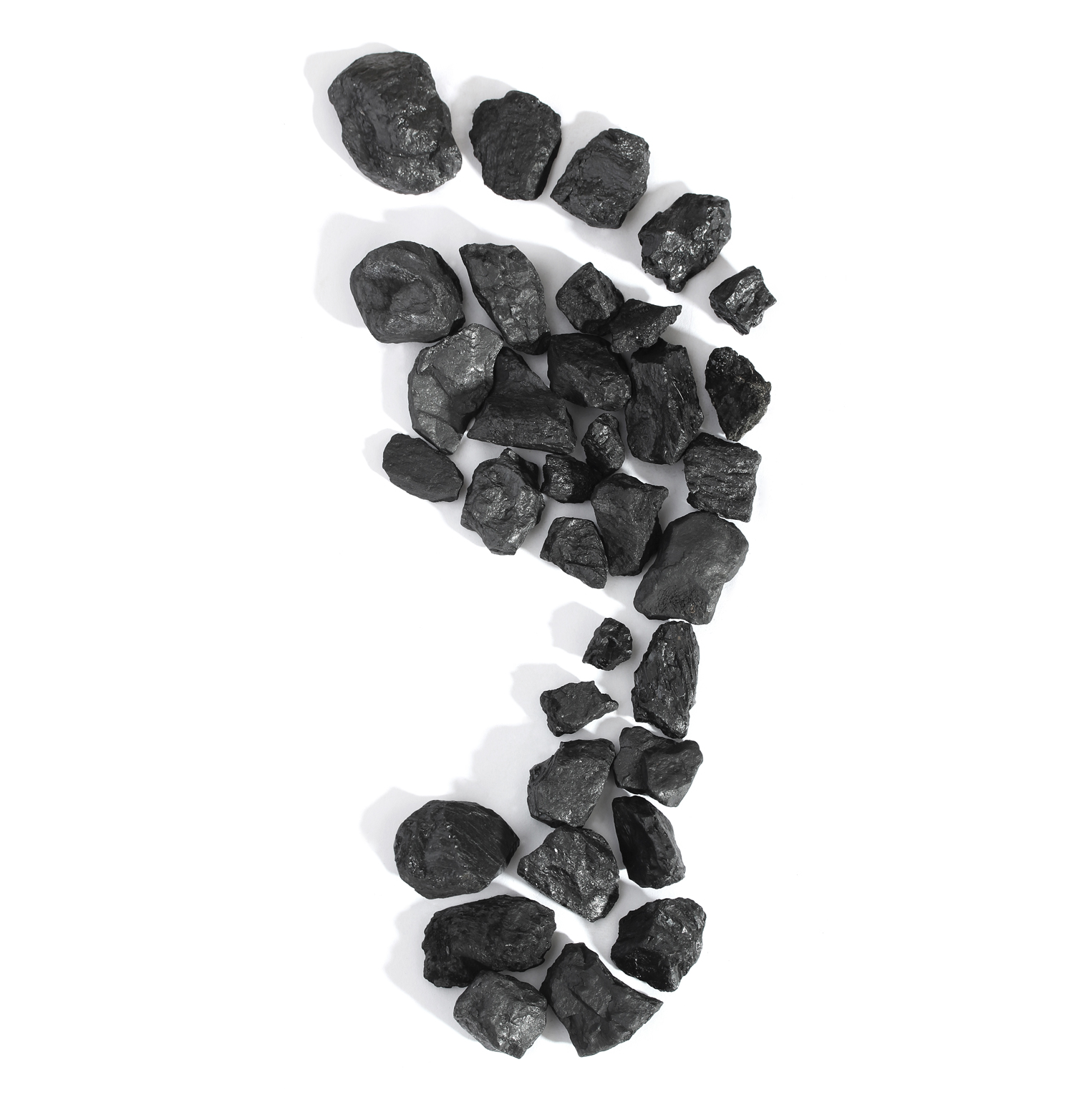
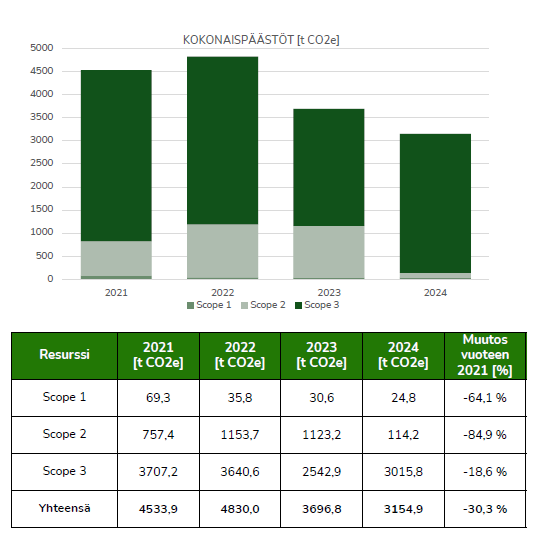


CARBON FOOTPRINT
An organization’s total carbon footprint refers to all emissions calculated over a defined time period. The most significant greenhouse gases contributing to the footprint are carbon dioxide, methane, and nitrous oxide. Carbon footprint calculation results are presented in carbon dioxide equivalents (CO2e), which is used to equalize carbon footprint comparison.
TAMMER BRANDS & CARBON FOOTPRINT
We carry out our annual greenhouse gas emissions calculations in cooperation with Reforest Finland Oy. The scope of calculation has remained the same since 2021, making the results comparable. Calculating our carbon footprint helps us identify the main sources of emissions, allowing us to focus our reduction efforts where they matter most.
The calculation is based on Greenhouse Gas Protocol, where emissions are divided in Scope 1, 2, and 3 emissions.
- Scope 1 – Direct emissions caused by use of Tammer Brands vehicles.
- Scope 2 – Emissions caused by purchased electricity and district heating/cooling.
- Scope 3 – Emissions included in our yearly calculation are self-financed logistics (upstream), commuting, business travel, packaging material and auxiliary supply purchases for the Hämeenlinna Logistics Centre and the Tampere office, as well as waste and water from the Hämeenlinna Logistics Centre and the Tampere office.
We annually calculate the direct emissions from our own operations (company vehicles) and the indirect emissions (electricity and district heating we use), as well as other indirect Scope 3 emissions listed above. We are continuously refining the calculation of Scope 3 emissions, which also requires the contribution of our partners.
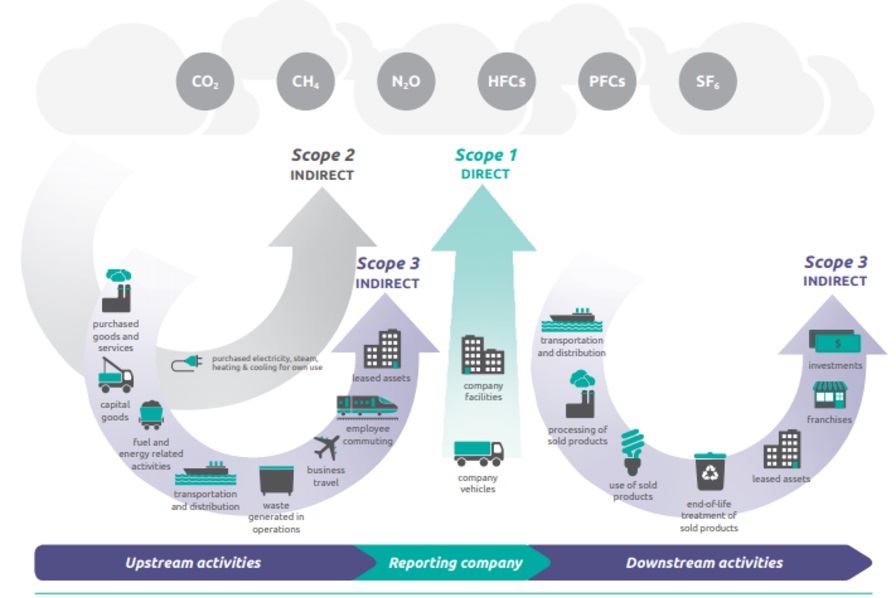
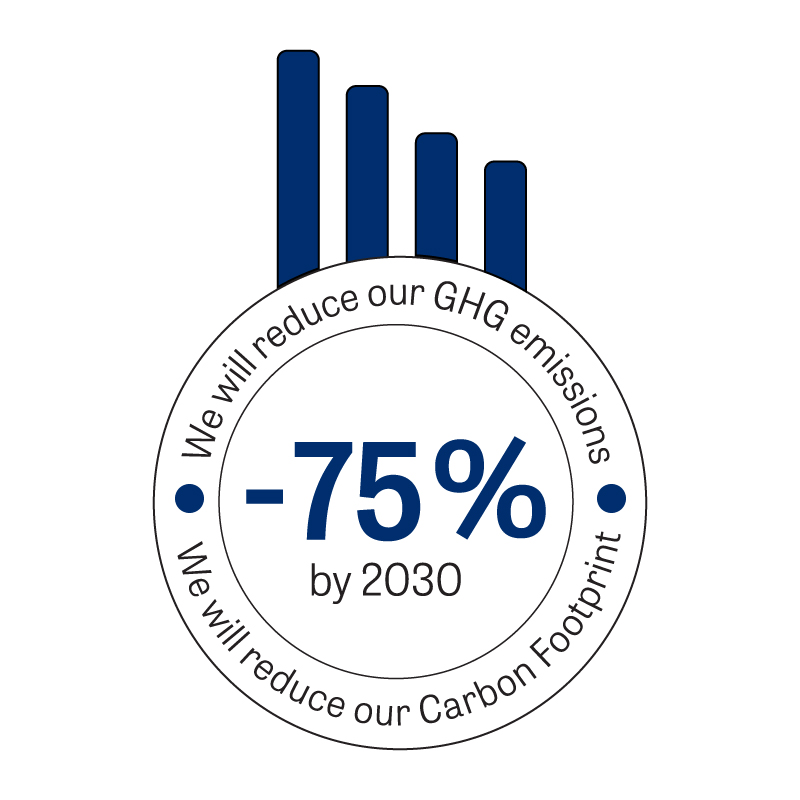
OUR TARGET
We have set clear and measurable targets for our emission reduction measures. We calculate our carbon footprint annually and compare the figures with previous years. Our annual carbon footprint report shows whether the targets have been achieved. We have set a target to reduce the direct and indirect emissions of our own operations, but we also take climate and environmental aspects into account when planning our product range.
TAMMER BRANDS & EMISSION REDUCTION TARGET
Our goal is to reduce the direct Scope 1 and indirect Scope 2 emissions from our own operations by 75% from the 2021 baseline level of 827 t CO2e by 2030, meaning that by 2030 at the latest our Scope 1 and 2 emissions must not exceed 207 t CO2e. In 2024, we reached the 75% emission reduction target set for 2030. In 2024, the direct Scope 1 and indirect Scope 2 emissions from our own operations amounted to a total of 139 t CO2e as a result of a fossil-free energy contract.
At the beginning of 2024, we switched to a fossil-free energy contract, which significantly reduced the direct and indirect Scope 2 emissions. The emissions from the district heating we use are also decreasing as district heating companies invest in carbon-free energy.
In earlier years (2021–2023), the mixed electricity without guarantees of origin that we used significantly increased our emissions, as the residual mix emission factors grew substantially year by year. Each year, we carry out energy-saving measures for electricity use, heating, and cooling in our properties, supported by insights from our annual carbon footprint calculation.
Tammer Brands has an average of 10 vehicles at its disposal. Our company vehicles have been petrol and diesel cars, but we purchased our first full electric cars in late 2022. New vehicles are mainly full electric cars.
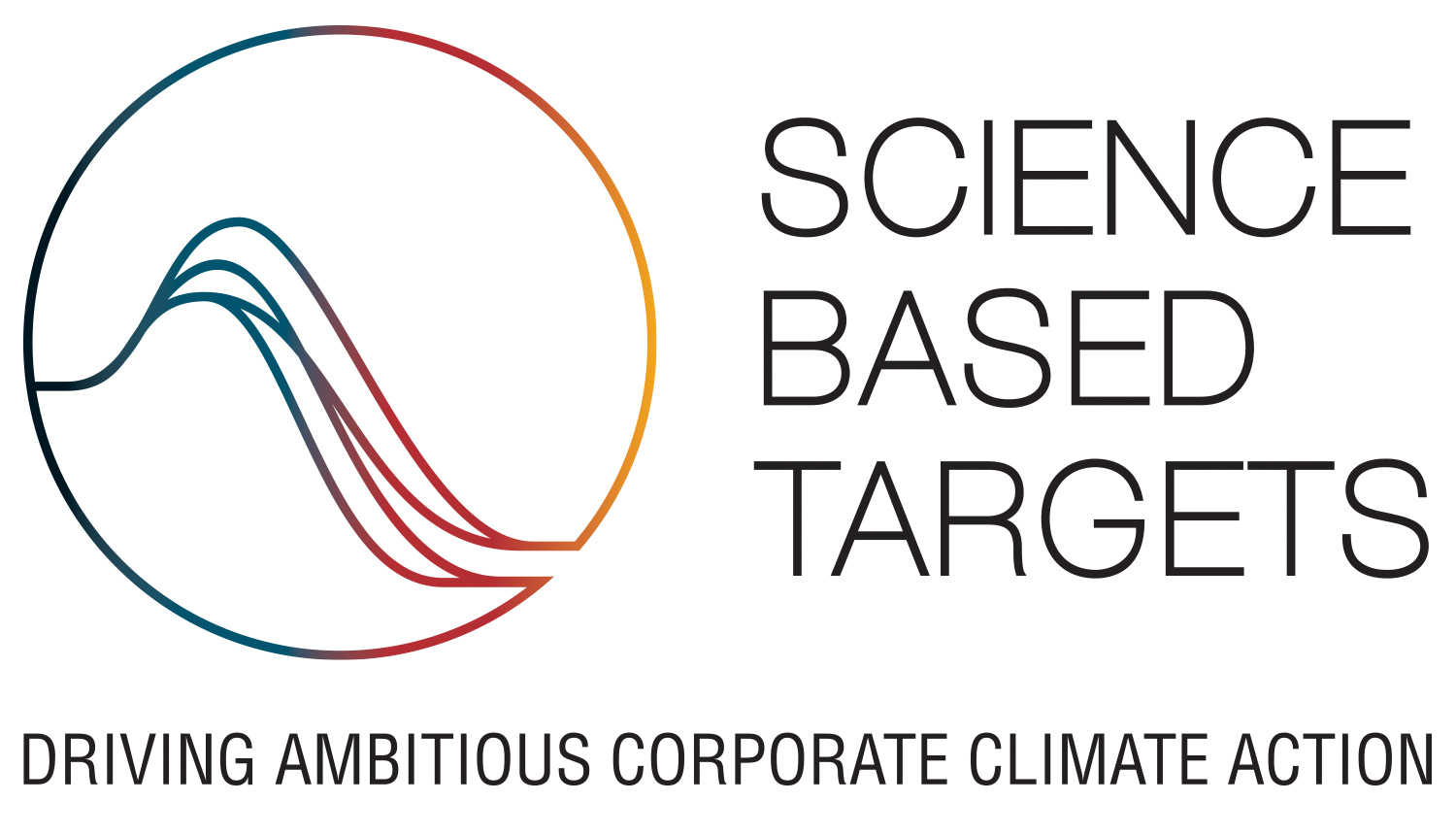
SBT = SCIENCE BASED TARGETS
Being part of the SBT initiative means that we commit to the goal of the 2015 Paris Agreement to limit global warming to below two degrees. By committing to the SBT initiative, we can achieve even more impactful results together with many other actors.
Founded in 2015, Science Based Targets initiative was influenced by World Resources Institute, World Wide Fund for Nature WWF, United Nations Global Compact -initiative and Carbon Disclosure Project CDP. Science-based targets are emission reduction targets that are defined on the basis of science.
SBTI & TAMMER BRANDS
We are committed to an emission reduction target in line with the Science Based Targets initiative (SME target route). Our SBTi target was approved on August 11, 2022. You can access the Science Based Targets database <here> to check Tammer Brands’ target.
Our official SBTi commitment is that we engage to reduce our Scope 1 and 2 emissions by 38 % by year 2030 compared to the base year 2021. But our target is a 75 % reduction in Scope 1 and 2 emissions by year 2030 compared to the base year 2021. We also commit to measure and reduce our Scope 3 emissions.
SBT = SCIENCE BASED TARGETS
Being part of the SBT initiative means that we commit to the goal of the 2015 Paris Agreement to limit global warming to below two degrees. By committing to the SBT initiative, we can achieve even more impactful results together with many other actors.
Founded in 2015, Science Based Targets initiative was influenced by World Resources Institute, World Wide Fund for Nature WWF, United Nations Global Compact -initiative and Carbon Disclosure Project CDP. Science-based targets are emission reduction targets that are defined on the basis of science.
SBTI & TAMMER BRANDS
We are committed to an emission reduction target in line with the Science Based Targets initiative (SME target route). Our SBTi target was approved on August 11, 2022. You can access the Science Based Targets database <here> to check Tammer Brands’ target.
Our official SBTi commitment is that we engage to reduce our Scope 1 and 2 emissions by 38 % by year 2030 compared to the base year 2021. But our target is a 75 % reduction in Scope 1 and 2 emissions by year 2030 compared to the base year 2021. We also commit to measure and reduce our Scope 3 emissions.


SUPPLY CHAIN
The greenhouse gas emissions from our entire value chain represent our most significant climate impact. The greenhouse gas emissions from our entire value include, among other things, the entire lifecycle of Tammer Brands products — covering not only manufacturing, but also sourcing, transportation, and end use.
SCOPE 3 -EMISSIONS
Reducing emissions from product manufacturing and logistics is only possible through active cooperation with our partners. Amfori’s BEPI (Amfori Business Environment Performance Initiative) programme enables us to review the environmental performance of our suppliers and mitigate environmental risks in our value chain. The number of our suppliers participating in the Amfori BEPI program increases significantly every year.
From the indirect Scope 3 emissions, we measure annually self-financed logistics (upstream), commuting, business travel, packaging material and auxiliary supply purchases for the Hämeenlinna Logistics Centre and the Tampere office, as well as waste and water from the Hämeenlinna Logistics Centre and the Tampere office.
Self-financed logistics (upstream) is the largest emission source in the Scope 3 category. Logistics emissions have decreased since 2021, partly due to a change in the calculation method. Since 2023, the calculation of upstream logistics has been based on emissions reported by logistics companies, whereas previously emissions were estimated on a tonne-kilometer basis using estimated transport distances.
We have succeeded in refining the emissions calculation for packaging material and auxiliary supply purchases (using weight data instead of monetary values). In this category, updating emission factors has a significant impact on total emissions.
Emissions from business travel vary, partly due to annual changes in calculation methods. In this category, it is necessary to refine and stabilize the calculation method for carbon footprint emissions.
In 2023, the calculation was expanded to include wastewater volumes. Waste emissions vary depending on the total amount of waste, the proportion of energy recovery, and the number of decommissioned forklift batteries.
